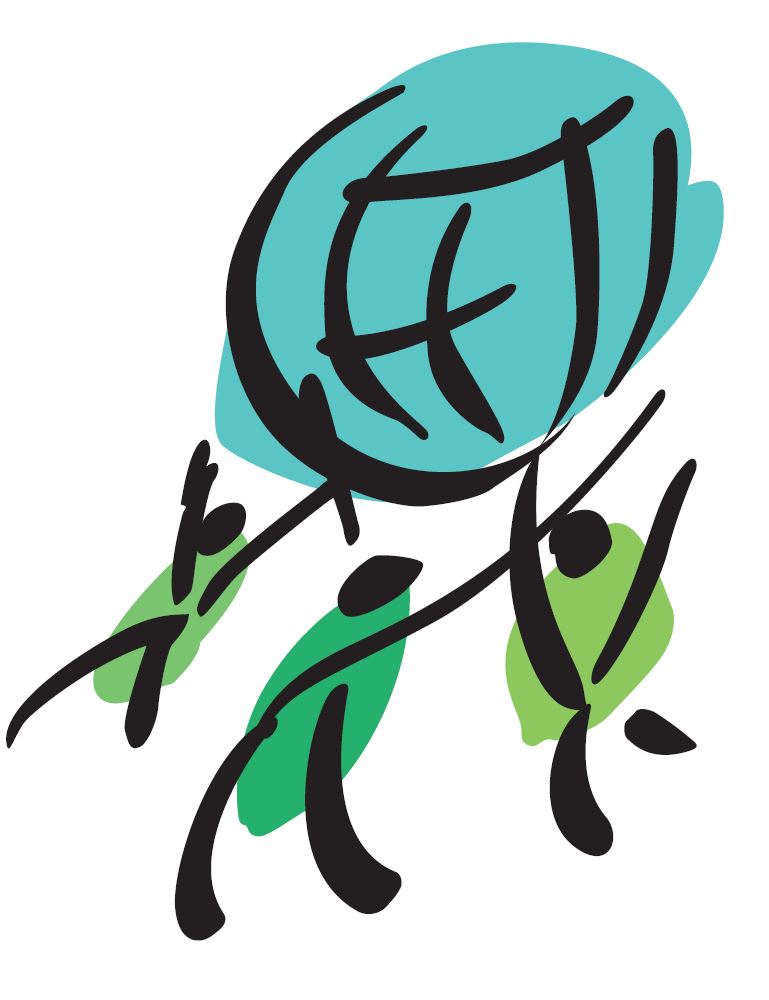GOALS OF THE CONFERENCE
To give an opportunity to non-profit organizations, scientific institutions and specialists engaged in practical nature protection to discuss the application and exchange experience in the use of GIS technologies in their work, to obtain technical skills and theoretical knowledge on the use of GIS tools in environmental projects, to discuss the current state and ways of development of the GIS community for nature conservation in Russia and CIS countries.
TOPICS FOR DISCUSSION
• Experience in using GIS and remote sensing in environmental projects
• GIS Internet and mobile solutions for the nature conservation
• Open technologies and data for nature protection
• Development of GIS for Protected Areas and conservation of biodiversity
• The practice of organizing and conducting joint GIS projects between NGOs and / or scientific organizations
• GIS Internet and mobile solutions for the nature conservation
• Open technologies and data for nature protection
• Development of GIS for Protected Areas and conservation of biodiversity
• The practice of organizing and conducting joint GIS projects between NGOs and / or scientific organizations
PROGRAM
Friday, October 27th
09:00 – 10:00
09:00 – 10:00
Registration
10:00 – 10:15
10:00 – 10:15
Opening
10:15 – 12:00
10:15 – 12:00
Plenary session
- ITMO University – the first nonclassical university in Russia in GIS field (Ekaterina Turikova)
- Society for Conservation GIS in Russia (Anna Komarova)
- SCGIS Scholarship Program - 2016, 2017 (Anastasiya Philippova)
- Initiative "Conservation GIS in Ukraine": experience and perspectives (Anton Biatov)
- WEB-products of NextGIS company (Maxim Dubinin)
- Web-cartography in ESRI conservation program (Maria Sakirkina)
- Air pollution in Moscow: web-map creation. (Vasiliy Yablokov)
- Society for Conservation GIS in Russia (Anna Komarova)
- SCGIS Scholarship Program - 2016, 2017 (Anastasiya Philippova)
- Initiative "Conservation GIS in Ukraine": experience and perspectives (Anton Biatov)
- WEB-products of NextGIS company (Maxim Dubinin)
- Web-cartography in ESRI conservation program (Maria Sakirkina)
- Air pollution in Moscow: web-map creation. (Vasiliy Yablokov)
12:00 – 12:30
12:00 – 12:30
Coffee-break
12:30 – 13:30
12:30 – 13:30
Plenary session
- Thematic cartography in field studies, projecting and monitoring of nature protected areas of Saint-Petersburg. (Grigoriy Isachenko)
- Open GIS today: opportunities, advantages, problems (Eduard Kazakov)
- Land Surface Dynamics - Remote Sensing for Environmental Research (Igor Klein, German Remote Sensing Data Center | Land Cover Dynamics)
- Land-use changing cartography (Alexander Prischepov, University of Copenhagen)
- Open GIS today: opportunities, advantages, problems (Eduard Kazakov)
- Land Surface Dynamics - Remote Sensing for Environmental Research (Igor Klein, German Remote Sensing Data Center | Land Cover Dynamics)
- Land-use changing cartography (Alexander Prischepov, University of Copenhagen)
13:30 – 14:00
13:30 – 14:00
Plenary discussion
14:00 – 15:00
14:00 – 15:00
Lunch
15:00 – 16:30
15:00 – 16:30
Workshops
- Story maps: simple instruments to create web-atlases, reports, media-resources (Maria Sakirkina)
- Species spreading modeling on the basis of distant monitoring (Alexander Schur)
- Master class by NextGIS company, topic will be published soon (Maxim Dubinin)
- Species spreading modeling on the basis of distant monitoring (Alexander Schur)
- Master class by NextGIS company, topic will be published soon (Maxim Dubinin)
16:30 – 17:00
16:30 – 17:00
Coffee-break
17:00 – 19:00
17:00 – 19:00
Workshops
- Fundamentals of Google Earth Engine (Igor Glushkov)
- Driving Factors analysis of Land-use changing (Alexandr Prischepov)
- Programs to work with trail cameras data (Sergey Ogurtsov)
- Driving Factors analysis of Land-use changing (Alexandr Prischepov)
- Programs to work with trail cameras data (Sergey Ogurtsov)
19:00 – 20:00
19:00 – 20:00
Evening session
Saturday, October 28th
09:30 – 09:45
09:30 – 09:45
Papers (Open Cafe; introduction)
09:45 – 12:00
09:45 – 12:00
Papers (Open Cafe; four sessions)
Abstracts will be availiable soon
12:00 – 12:30
12:00 – 12:30
Coffee break
12:30 – 14:00
12:30 – 14:00
Round tables
Session 1:
- Education in GIS and Remote Sensing (Anna Komarova)
- Informational cooperation of nature protected areas in CIS countries (Vjacheslav Sipach)
- Natural fires. Ideas for visualization (Marina Kanischeva)
Session 2:
- GIS for conservation value assessment (Denis Mirin, Nikolai Fadeev)
- Drones for nature protection (Nikita Slavin)
- Finding "natural landscape": modelling of nature ecosystems synergetic using GIS (Evgeniy Kolbovsky)
- Education in GIS and Remote Sensing (Anna Komarova)
- Informational cooperation of nature protected areas in CIS countries (Vjacheslav Sipach)
- Natural fires. Ideas for visualization (Marina Kanischeva)
Session 2:
- GIS for conservation value assessment (Denis Mirin, Nikolai Fadeev)
- Drones for nature protection (Nikita Slavin)
- Finding "natural landscape": modelling of nature ecosystems synergetic using GIS (Evgeniy Kolbovsky)
14:00 – 15:00
14:00 – 15:00
Lunch
15:00 – 16:30
15:00 – 16:30
Workshops
- Earth Observation System Products (Igor Klein)
- Introduction to radar data and the ways to use it (Artem Nikitskiy)
- Ground waters: modeling and resources management (Andrey Sennov) + Oil spills decoding (Vasiliy Yablokov)
- Introduction to radar data and the ways to use it (Artem Nikitskiy)
- Ground waters: modeling and resources management (Andrey Sennov) + Oil spills decoding (Vasiliy Yablokov)
16:30 – 17:00
16:30 – 17:00
Coffee break
17:00 – 18:30
17:00 – 18:30
Workshops
- Thematic algorithms for distant monitoring programming (Eduard Kazakov)
- Evaluation of cartography results accuracy (Alexandr Prischepov)
- Evaluation of cartography results accuracy (Alexandr Prischepov)
18:30 – 19:30
18:30 – 19:30
Public discussion
19:30 – 20:00
19:30 – 20:00
Closing ceremony
Open Cafe REPORTS:
WORKSHOPS
October 27th, 15:00-16:30
Story maps: simple instruments to create web-atlases, reports, media-resources
---
Maria Sakirkina,
ESRI-CIS
---
Maria Sakirkina,
ESRI-CIS
We'll learn how to use story-maps to present your work in the form of a web-atlas, a report, media-resources. Modern story-maps allow to show the photos attached to the map as well as to use abilities of interactive dimensional analysis and involvement of open raster and vector data from Alive atlas. At the workshop we will be discussing the current examples of using of such apps and be creating our owns! The platform to complete the task is a cloudy GIS ArcGIS Online.
Programs to work with trail cameras data
---
Sergey Ogurtsov, Central Forest biosphere reserve
---
Sergey Ogurtsov, Central Forest biosphere reserve
Trail cameras are not a GIS or RSD but the same tool and method of remote collection and processing of information. Today they are widely-used to complete important environment-oriented tasks but in Russia there are not enough procedures to process the massive data collected with trail cameras. We offer to discuss the most popular foreign programs to work with the data from trail cameras and to demonstrate how they work. All the programs are FOSS that is open and free to distribute. Their distribution may be given to all the listeners. One of the major tasks is to shape a Russian-speaking community of users of trail cameras to protect the environment at the platform of environmental GIS.
NextGIS:
setting up your paperless data surveys
---
Maksim Dubinin
"NextGIS"
setting up your paperless data surveys
---
Maksim Dubinin
"NextGIS"
Mobile devices and cloud are evewhere, so we should stop wasting paper. We'll set up our cloud storage, build forms and start collecting field data right on the workshop.
October 27th, 17:00-19:00
Fundamentals of Google Earth Engine
---
Igor Glushkov,
GIS-department, Greenpeace Russia
---
Igor Glushkov,
GIS-department, Greenpeace Russia
Topic will be published soon
Species spreading modeling on the basis of distant monitoring
---
Alexander Schur, Gebler Ecological Society ;
Sergey Dudov, Lomonosov Moscow State University
---
Alexander Schur, Gebler Ecological Society ;
Sergey Dudov, Lomonosov Moscow State University
Some technical bases of species distribution modeling with the usage of Maxent. Specifications of preparing initial data for modeling. Interpretation of obtained results.
The authors to prepare the projects connected with applying of such modeling for two examples – large carnivorous birds in the Altai Territory and some species of higher plants in the Amur Region.
The authors to prepare the projects connected with applying of such modeling for two examples – large carnivorous birds in the Altai Territory and some species of higher plants in the Amur Region.
Driving Factors analysis of Land-use changing
---
Alexander Prischepov,
Copenhagen University
---
Alexander Prischepov,
Copenhagen University
Land-use and round changing is making a huge negative impact on functioning of ecosystems and degradation of biodiversity. That's why we need to know not only about special distribution of this changing but also about its social, economical and natural driving factors. At the workshop we will learn basic theories describing land-use and ground changing, direct and indirect factors of these changes. Considering examples of abandoning of agricultural lands in Russia and increasing of tropical deforestation in the Brazilian part of Amazonia caused by increasing of meat import into Russia we'll also discuss the role of teleconnections and interactions of driving factors in Russia and Brazil. We'll also consider approaches towards the research of cause-effect relationships. The workshop will consist of an interactive lecture (2 ac.h.) and jointed practical work (1 ac.h.). The materials are aimed for a wide audience.
October 28th, 15:00-16:30
Oil spills decoding
---
Vasiliy Yablokov,
GIS-department, Greenpeace Russia
---
Vasiliy Yablokov,
GIS-department, Greenpeace Russia
Topic will be published soon
Introduction to radar data and the ways to use it
---
Artem Nikitskiy,
ITZ ScanEx
---
Artem Nikitskiy,
ITZ ScanEx
1. Introducing lecture. Specifications of radar data and fields of using them.
2. Detection of oil spills on radar images.
3. Detection of water crafts on radar images.
4. Answering questions.
2. Detection of oil spills on radar images.
3. Detection of water crafts on radar images.
4. Answering questions.
Ground waters: modeling and resources management
---
Andrey Sennov
---
Andrey Sennov
We offer to discuss the software aimed to complete tasks to manage the resources of ground waters. Nowadays this software has been integrated with GIS. The discussion will refer to the example of PMWIN (Processing Modflow 8.047, simcore.com), FEFLOW 7.1 (feflow.com, www.volgaltd.ru/rus/programs/vodnye-resursy/feeflow.html) и http://www.freewat.eu.
October 28th, 17:00-18:30
Thematic algorithms for distant monitoring programming
---
Edward Kazakov
Nansen International center for environment and remote sensing
---
Edward Kazakov
Nansen International center for environment and remote sensing
At the workshop we will show abilities to use modern programming language Python for such tasks as learning, preparing and processing data of remote sensing and abilities to use resources of additional processing tools (ESA Snap, OTB toolbox, SAGA) directly from your code.
Evaluation of cartography results accuracy
---
Alexander Prischepov,
Copenhagen University
---
Alexander Prischepov,
Copenhagen University
One of the most important moments in map producing (classifications) of changing in land-use with the help of satellite data is evaluation of cartography results accuracy. Unfortunately most of the published works and reports provide the information on accuracy evaluation incorrectly or incompletely. At the workshop we will be considering traditional and new ways of accuracy evaluation, corrections of measurements for areal specifications based on satellite data. The workshop will consist of an interactive lecture (2 ac.h.) and jointed practical work (1 ac.h.). Basic knowledge of remote sensing (user level) is welcome.
ROUND TABLE DISCUSSIONS
Session 1, 12:30-13:15
Education in GIS and distant monitoring
---
Anna Komarova,
GIS-department, Greenpeace Russia
---
Anna Komarova,
GIS-department, Greenpeace Russia
We'll start our round table with the report of Hourula Ina, he'll be talking about GIS-researches in University of Oulu. Generally we'll be speaking about possibilities of education in the field of GIS and RSD at the different stages: from school to postgraduate education, including extra-university options.
Informational cooperation of nature protected areas in CIS countries
---
Vycheslav Sipach,
SCGIS for Belarus;
Аnna Kvashnina, State nature reserve "Denezhkin Kamen"
---
Vycheslav Sipach,
SCGIS for Belarus;
Аnna Kvashnina, State nature reserve "Denezhkin Kamen"
Vyacheslav Sipach: "Creation of transboundary specially protected natural areas of Belarus and Russia requires new information approaches to joint territories management, and we will try to find an approach for solving this new task within the framework of the round table."
Anna Kvashnina: "We will help colleagues in GIS organization"
Anna Kvashnina: "We will help colleagues in GIS organization"
Wildfires.
Ideas for visualisation
---
Marina Kanishcheva
Global Fire Project,
Greenpeace Russia
Ideas for visualisation
---
Marina Kanishcheva
Global Fire Project,
Greenpeace Russia
Greenpeace is launching an international project on wildfires, and we are looking for new and beautiful ways to tell about this problem. Even if you have never dealt with fires, but you know interesting data visualization formats, you can share your ideas or we can come up with new ones.
Session 2, 13:15-14:00
Using UAV in environmental NGO
---
Nikita Slavin,
FGBU "Kronotsky State Reserve"
---
Nikita Slavin,
FGBU "Kronotsky State Reserve"
Round table unites representatives of PAs and manufacturers and operators of UAVs. We aim to give an idea of the capabilities of modern aircraft, to exchange experience and to find new solutions for the use in environmental activities.
Assessment of biological value of territories using GIS-technologies
---
Denis Mirin, St. Petersburg State University; Nikolay Fadeev, All-Russian Research Institute of Medicinal and Aromatic Plants (VILAR)
---
Denis Mirin, St. Petersburg State University; Nikolay Fadeev, All-Russian Research Institute of Medicinal and Aromatic Plants (VILAR)
Denis Mirin: "The relevance of GIS methods in analyzing the impact of various environmental factors, the correlation of terrestrial data and remote sensing, We want to clarify some things to us, and to show our achievements to others ".
Nikolai Fadeyev: "It is interesting to discuss the problems of deciphering and monitoring the state of plant communities based on filming with UAVs and satellite imagery."
Nikolai Fadeyev: "It is interesting to discuss the problems of deciphering and monitoring the state of plant communities based on filming with UAVs and satellite imagery."
In search of the "natural landscape": the problems of modeling synergetics of natural ecosystems using modern GIS
---
Evgeny Kolbovsky,
Faculty of Geography of Moscow State University
---
Evgeny Kolbovsky,
Faculty of Geography of Moscow State University
Today, more and more often we see landscape maps in "gis-performance", but these are still works created in technology, which has been dubbed "the state of art mapping" all over the world. In other words, because the landscape map is "made" in the GIS - it does not cease to be "drawn". Meanwhile, modern geoinformation systems provide powerful tools for MODELING landscapes, which until now are little known to specialists working in the field of nature protection. At this stage, we can fairly effectively model landscape locations (geotopes, ecotopes), but we still have serious difficulties at the stage of synthesis of biotic and abiotic components into a systemic "whole". Problems and perspectives in this sphere that is important for practice are the theme of our round table.
WHAT WILL BE AT THE CONFERENCE

The plenary session will be devoted to reports describing trends in the use of GIS and remote sensing in environmental practice. We hope to make the plenary session diverse and interesting to the participants. If you think that one of the experts known to you should be specially invited to speak at the plenary session, please let us know (indicate the person's name, contacts and the proposed topic of the speech).

This year, participants' reports and discussions will be organized in the open discussion format (Open Cafe). The reports will be presented in the form of short annotations with the opportunity to discuss topics of interest on the sites (each author of the report will be able to use a small space, handouts, show a presentation, animation or film on a laptop, etc.), participants will be able to move between sites.
Reports will be organized in three sessions, each report will be allocated half an hour (if the discussion ends earlier, the participants will be able to join another group).
Presentation of your report on Open Cafe can be also done in a poster. The format of the posters is not limited (from A2 to A0). The number of posters from one participant is not limited, but in case there are more than two, it must be agreed with the organizers, so that everyone has enough space.
We hope that the majority of the conference participants will prepare a message in the Open Cafe format - this event will be the core of our conference.
Please prepare all the demonstration materials (posters, presentations, handouts) in English.
Reports will be organized in three sessions, each report will be allocated half an hour (if the discussion ends earlier, the participants will be able to join another group).
Presentation of your report on Open Cafe can be also done in a poster. The format of the posters is not limited (from A2 to A0). The number of posters from one participant is not limited, but in case there are more than two, it must be agreed with the organizers, so that everyone has enough space.
We hope that the majority of the conference participants will prepare a message in the Open Cafe format - this event will be the core of our conference.
Please prepare all the demonstration materials (posters, presentations, handouts) in English.

Our conference is a place for communication of specialists, discussion of actual problems and exchange of experience. We invite participants to suggest and hold a round table on the topic of interest to them. To declare the topic of the round table is possible up to the beginning of the conference, then the participants will be able to choose the most interesting questions and join the discussion. Round tables will be grouped in case of related topics and held in several sessions so that their facilitators can also take part in the discussions.

At the conferences of the Society for Conservation GIS, traditionally a great deal of time is devoted to technical master classes from leading experts in the field of GIS and remote sensing. Master classes are a unique opportunity to get acquainted with the possibilities of web-services and software, which are most often used in environmental projects. As the program is full, a list of master classes and short annotations will be provided at the end of the document. For many master classes, you will need a laptop with pre-installed software, and possibly - and preliminary training. We will report this after approval of the list of master classes.

A special space will be set up at the conference, where participants will be able to exchange any printed materials demonstrating the results of their environmental projects.

During the breaks at the conference, photographs and cartographic products will be available showing the results of the environmental projects of the participants in the form of a slide show. Please send photos and materials to scgisrussia@gmail.com before September 30, 2017. We will make the Cube library again and for sure we will come up with something else. And especially we will be glad to your ideas and their implementation! Together we will make the conference a bright and inspiring event :)
STAY INFORMED!
Even if you are not yet sure that you will participate in the conference - please leave an email address and we will remind you about the registration and share the news
By clicking the button you agree that we use your personal data for information delivery










